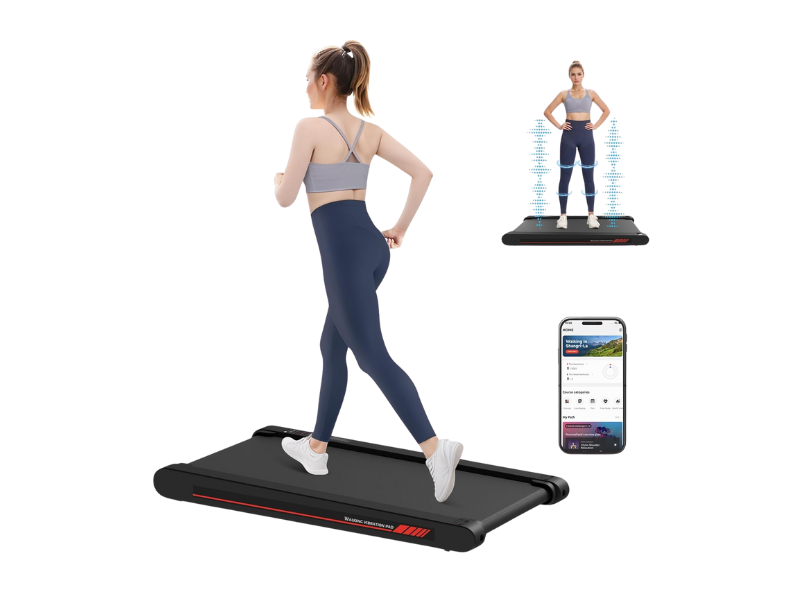When you buy through our links, we may earn a commission. Learn More.
For Health Insiders that are serious about being proactive agents in their own healthcare, there is nothing more satisfying than telling friends and family how you slay your weekly active zone minute goals.
My introduction to active zone minutes came in the form of a Fitbit that was gifted to me a few months ago. To say I’m now a bit obsessed about exceeding my active minutes goal is an understatement.
While Fitbit uses the term active zone minutes, other fitness devices have something similar. The goal is to inform you about how much heart-impacting activity you are getting on the daily.
Possibly the most important muscle in the body, the heart is a muscular organ that requires exercise. Aerobics help reduce the effects of metabolic syndrome, lower your risk of heart disease, keep excess weight off, stabilize blood sugar, prevent blood clots, and lower blood pressure.
Having a healthy ticker also simply means that you can participate in life more fully, doing the things you love with ease.
Heart Rate & Active Zone Minutes

Every adult should know their resting heart rate and their maximum heart rate goal. This goal is dependent on gender, level of physical fitness and your age. Your heart rate objectives are personal to your health situation and help establish your heart rate zones. It’s important to get your fitness in but also be aware of what your upper limits are so you can avoid overdoing it.
Most fitness trackers will determine optimal heart rate goals based on your personal data, but if you don’t have a tracker, here’s a handy calculator that can help.
Canadian Physical Activity Guidelines recommend at least 150 minutes per week of moderate to vigorous aerobic exercise. The “active minute” goal is designed to align with physical activity and account for intensity. For example, vigorous intensity such as a bike ride counts for x2 active minutes vs. x1 active minute for a moderate activity such as walking.
Therefore, you can get all your 150 active minutes quickly by doing 75 minutes of vigorous exercise (get that heart rate up!). You could also do a combination of both vigorous and moderate intensity or if you’re just comfortable doing your daily steps, carry on with moderate exercise to get to your 150 minutes.
Read our article for a comprehensive overview on the best cardio-busting exercises you can do to get those active minutes: https://thehealthinsider.ca/unlocking-longevity-the-profound-impact-of-daily-exercise-on-health-and-aging/
Steps and Active Zone Minutes

The concept of 10,000 daily steps originated in the 1960s as a marketing strategy for a Japanese pedometer and has become widely popularized by fitness devices over the past few years. While there seems to be no doubt that walking every day is good for your health, is there still value to your heart to have a daily step goal, even if it’s only considered moderate exercise?
The answer is a resounding yes. Published in the European Journal of Preventive Cardiology in August 2023, the largest analysis to investigate the health impact of walking found that taking at least 3,867 steps a day started to reduce the risk of dying from any cause, and 2,337 steps a day reduced the risk of dying from cardiovascular disease.
Furthermore, the study concluded that with every 500 to 1000 extra steps you walk, risks continue to decrease significantly. The researchers found that even if people walked as many as 20,000 steps a day, the health benefits continued to increase. They have not yet found an upper limit.
According to a study lead by Prof. Maciej Banach, “ the more you walk, the better. We found that this applied to both men and women, irrespective of age, and irrespective of whether you live in a temperate, sub-tropical or sub-polar region of the world, or a region with a mixture of climates. In addition, our analysis indicates that as little as 4,000 steps a day are needed to significantly reduce deaths from any cause, and even fewer to reduce deaths from cardiovascular disease.”

Stay active while you work with this compact 4-in-1 under-desk treadmill. It features a quiet 2.5HP motor, vibration mode for added muscle recovery, app tracking, and supports up to 330 lbs—all in a sleek, space-saving design.
You Are the Primary Agent of Your Own Health
Research continues to show that the more people take responsibility for their own health through simple acts such as walking 4,000 steps a day, or taking a vigorous bike ride, the healthier they are.
The reality is any activity is better than none. Being sedentary is up there among the worst things you can do for your health.
Good health is a series of choices we make every day. So, take it step by step (literally!), listen closely to your body, know what your heart rate limits are and be aware of your tracker data and what the trends might be communicating.
Before you know it, you’ll be getting in those active minutes for better health.
~ Read more from The Health Insider ~
- Health Canada Authorizes First 8-Week Treatment for Acute Hepatitis CHealth Canada’s approval of MAVIRET for acute HCV allows doctors to treat adults and children immediately, a key step toward the 2030 elimination goal.
- The 7-Day Reset: A Social Media Break Can Transform Your Mental HealthDiscover why science says you only need one week off social media to lower anxiety and sleep better. A practical guide for the modern Canadian.
- The Science of Sweat: How Saunas Boost Heart & Brain HealthExplore the life-extending benefits of sauna use. Compare traditional and infrared costs, health benefits and safety in our expert guide.
- There’s a Reason Your Voice May Not Be As Clear as it Can BeFrom dry winters to loud parties, your voice takes a beating. Learn how to protect your “vocal instrument” with these expert tips and SAC guidelines.
- Leftovers Safety: Store & Reheat Like a ProLearn how to store and reheat holiday leftovers safely. From the “Two-Hour Rule” to freezing tips, keep your Canadian kitchen healthy this season.
- Guilt-Free Indulgence for the Holidays. This is How it’s Done.Enjoy every plate this season! Prep your gut with our low-effort tips: boost hydration, sip digestive tea, and avoid the post-feast crash.
The information provided on TheHealthInsider.ca is for educational purposes only and does not substitute for professional medical advice. TheHealthInsider.ca advises consulting a medical professional or healthcare provider when seeking medical advice, diagnoses, or treatment. To read about our editorial review process click here.
















